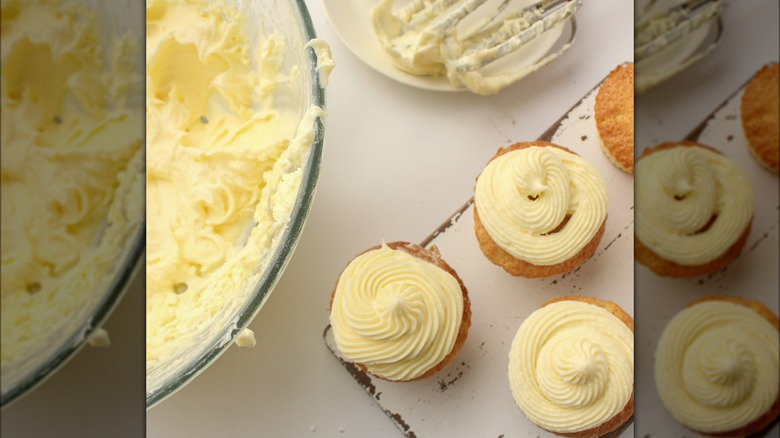The Sign That Your Cream Cheese Icing Is Perfectly Mixed
When you bite into a cake, you want your eyes to roll back in sheer sugary delight. When you're a kid, the sweeter something is, the better. As you get older, however, and your growth spurts don't prompt that sugary craving, you aren't as prone to super-sweet tastes. Even frosting begins to lose some of its appeal. Instead of buttercream, the mildly tangier tinge of cream cheese becomes much more palatable. The challenge, then, is getting cream cheese frosting to the right consistency.
When you're making cream cheese frosting, the goal is to create a thick yet fluffy topping that can hold its shape. It shouldn't be so thick that it's hard to work with, and it definitely shouldn't be clumpy. However, you don't want to mix it to the point that it's runny — if you can pour it over your cupcakes, that's not frosting. When you get it right, you'll have a silky-smooth cream that's easy to spread and shape.
How to get perfect cream cheese frosting
The secret to getting your cream cheese frosting to the perfect consistency is knowing when to stop mixing. When cream cheese is over-beaten, it's more prone to dissolve sugar, which results in a frosting with very little substance. The key is to mix the ingredients until they're just combined. Specifically, add butter that has softened to room temperature to cream cheese (which has also softened) in a medium-sized bowl. Cream the ingredients together until they form a fluffy but cohesive mix. Using a hand mixer for about three to four minutes should accomplish the task as desired.
Besides allowing your butter and cream cheese to soften before mixing, it's important to use full-fat cream cheese to get the best results. And, after you've mixed up the frosting and applied it to your treats, store them in the refrigerator. Not only does this help keep the frosting firm, but it's also essential for safety concerns. According to the USDA, soft cheeses must be refrigerated. Two hours is the maximum amount of time that cream cheese can sit at room temperature.

